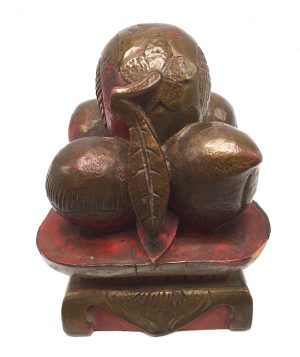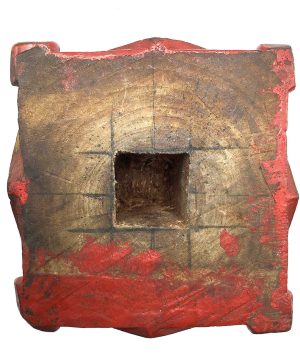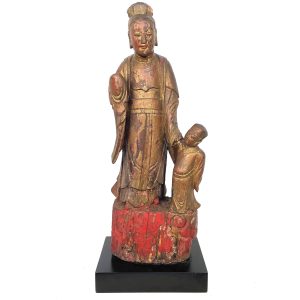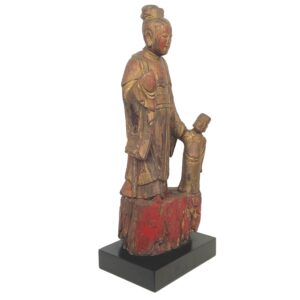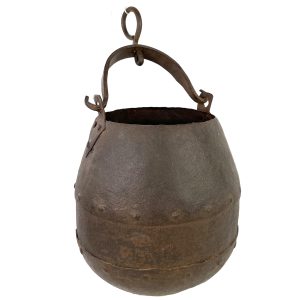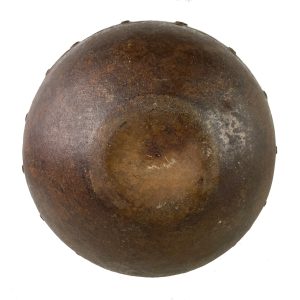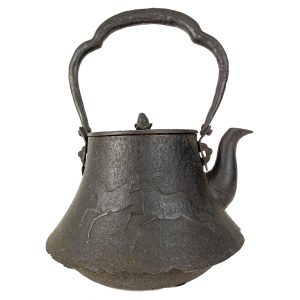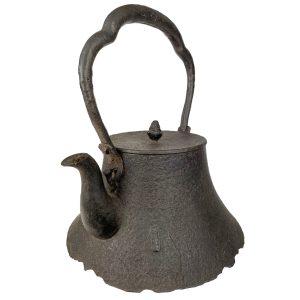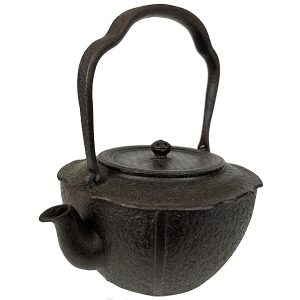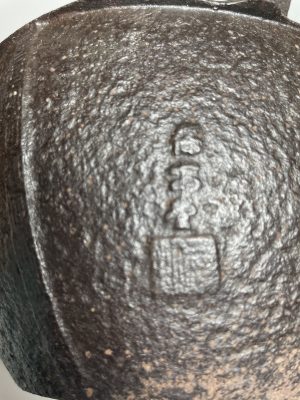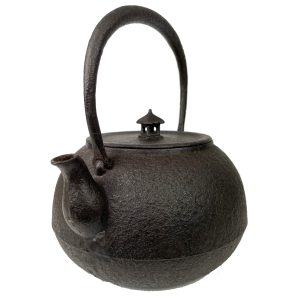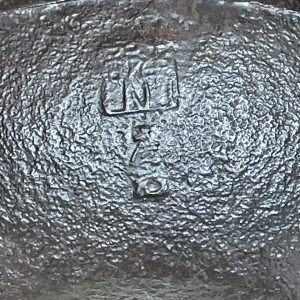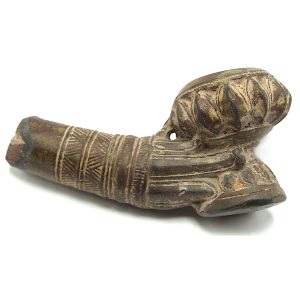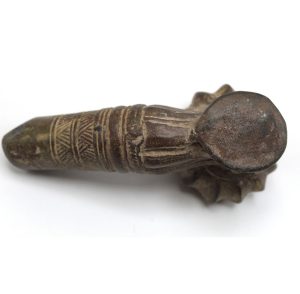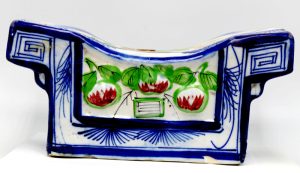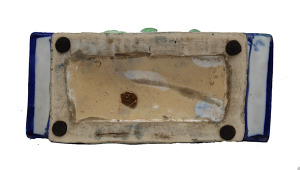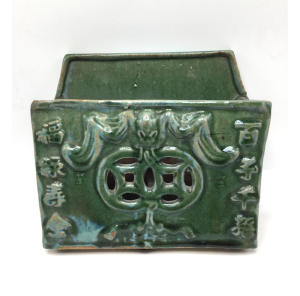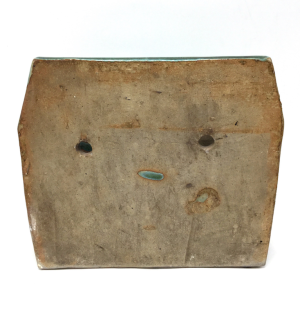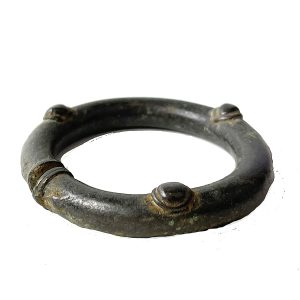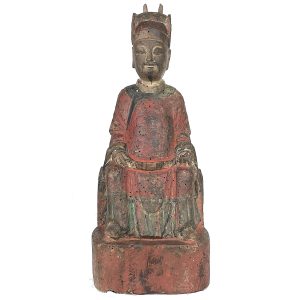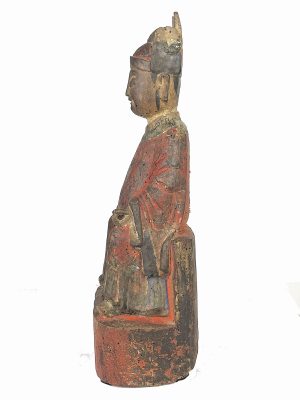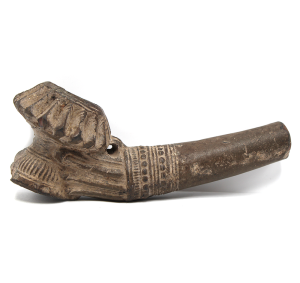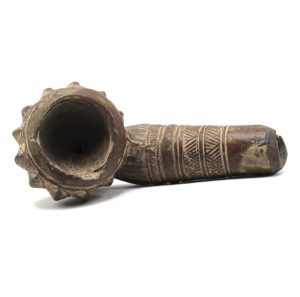Showing 37–48 of 313 results
-
Sale!


$225.00 Original price was: $225.00.$155.00Current price is: $155.00.
H: 4.75 ” Dia: 3.675 ” | FREE SHIPPING WITHIN CONTINENTAL U.S.!
This antique carving of a wood food offering with a lacquer coating was an auspicious ornament for a Chinese bed to bring the lucky couple prosperity, health and a happy life. The pomegranate on top is a fertility and the four peaches below are longevity symbols. The combination of the fruits is a wish for many sons and longevity and is perfect gift for newlyweds.
-
Sale!


$2,250.00 Original price was: $2,250.00.$1,500.00Current price is: $1,500.00.
Ht: 26” W: 10.25” D: 7.5″ |CALL 213-568-3030 OR EMAIL [email protected] FOR SHIPPING
This rare, sensitive and beautifully carved image probably depicts Guanyin the Bodhisattva of Compassion holding a young child’s hand glancing down with compassion and tenderness while he looks up for assurance and protection. This unique provincial Popular Religion carving depicts her as humble, engaging and modestly clad with a serene softness. It is similar to but different from Songzi Guanyin, the “Child-Giving Guanyin” to whom couples pray to become fertile and to bear a son.
-
Sale!


$150.00 Original price was: $150.00.$85.00Current price is: $85.00.
H: 12.75″ Dia: 7″ | FREE SHIPPING IN CONTINENTAL U.S.!
This is simple but attractive antique welded Indian iron pot is covered with a nice antique rust color patina and its clear lines indicate where each metal piece was joined in its construction. Generally formed in an egg shape with a rounded bottom for easy pouring, it has a tactile charm and character that would add charm to any room, especially a kitchen, look more
-
Sale!


$695.00 Original price was: $695.00.$550.00Current price is: $550.00.
Ht: 12.5″ W: 10″ D: 9.5″ | CALL 213-568-3030 OR EMAIL [email protected] FOR SHIPPING COST
Made in the Meiji era (1868-1912),this hand crafted antique Japanese cast iron tetsubin teapot has an unusual decorative handle and curved spout and has a beautiful relief design of galloping horses. Horses have been revered creatures in Japanese culture that embody grace, power and nobility. The knob on the lid probably represents a lotus, the Buddhist symbol of purity and enlightenment. As with all antiques, these pieces are purely decorative for display purposes only.
-
Sale!


$325.00 Original price was: $325.00.$275.00Current price is: $275.00.
Ht: 8.625” W: 7.5” D: 6.5” | CALL 213-568-3030 OR EMAIL [email protected] FOR SHIPPING COST
The hand crafted Tetsubin teapot displays simple yet elegant design: a scalloped top, gently curved handle, and short rounded spout, textured surface. The body is divided in 4 quadrants with meander border designs and the lid is has tiny diamond shaped indentations and is topped with a lotus shaped knob. A raised manufacturers seal on the back. Like all old Tetsubin cast iron kettles, it has rust on the bottom which can be removed by boiling green tea inside it, and is thus for display purposes only.
-
Sale!


$295.00 Original price was: $295.00.$225.00Current price is: $225.00.
Ht: 9.25″ W: 8″ D: 7.25″ | CALL 213-568-3030 OR EMAIL [email protected] FOR SHIPPING COST
This Meiji (1868-1912) hand crafted cast iron Tetsubin is especially charming with a textured surface, unique shape and temple ornamental knob on its lid. Two manufacturer’s seals are impressed on its side. The outside is in excellent condition. Since, like all old Tetsubin cast iron kettles, it has developed rust on the bottom that can be removed by boiling green tea, it is recommended for display only to enhance any style kitchen.
-


$85.00
H: 2” W: 1.75” D: 4” | FREE SHIPPING WITHIN CONTINENTAL U.S.!
Antique and vintage ceramic tobacco pipes are part of a long cultural tradition of Burmese/Myanmar and Thai hill tribes. Mould made and adorned with intricate designs, a bamboo or metal stem was often inserted at the end through which smoke was drawn. This highly collectible antique item reflects hill-tribe skills creating decorative functional objects and would be a unique gift for any pipe smoker, but, like all antique items, we recommended it be used as a decorative item.
-


$105.00
H: 4″ W: 9.5″ D: 4.5 ” | FREE SHIPPING!
This charming fanciful vintage underglaze blue and white porcelain pillow has added hand-painted green and red florals, fruits and vases in relief within framed geometric borders of blue cobalt oxide pigment. The top curves in the center to cradle the neck for comfort and flares outward. The front and back sides have charming painted relief images of vases on the front and fruit on the back. The top and bottom have seals applied to Chinese antiques indicating they were approved for export. There is a slight chip on the front, otherwise it is in excellent condition.
-
Sale!


$185.00 Original price was: $185.00.$145.00Current price is: $145.00.
H: 7.125″ W: 8.375″ D: 3.75″ | FREE SHIPPING WITHIN CONTINENTAL U.S.
This Shiwan green chopsticks holder is divided into two parts with holes on top for hanging and small holes on the bottom for drainage. Chopsticks were often wedding gifts from mothers to daughters with many auspicious wishes: phrases for sons as soon as possible, upside down bats with coins and ribbon meaning “blessings in front of your eyes,” and border clouds and thunder symbolizing life-giving rain and abundance.
-


$395.00
Prehistoric Thai Bronze Age jewelry, adzes and tools have been found all over Thailand. Excavations from various soil levels show many sites had been inhabited for millennia. They confirm the existence of an early, well-developed metallurgical tradition of bronze digging and cutting tools, adzes (ancient axe like tools to cut wood), adult and child’s bronze…
-
Sale!


$395.00 Original price was: $395.00.$275.00Current price is: $275.00.
H: 13.75″ W: 5.25″ D: 4″ | FREE SHIPPING WITHIN CONTINENTAL U.S.!
This ancestor figure, carved in boxwood the preferred wood softwood during the Qing Dynasty, is portrayed in the characteristic pose of a Chinese civilian official, grasping his official’s belt with his right hand to demonstrate his important stature – which was really not so important for this gentleman, given his humble seating furniture and his modest attire. His right hand rests on the his knee as he sits erect on a thick low-back pedestal. Unlike many officials who are serious, this one is more approachable, with simple deeply carved smiling features, high arching brows and a black painted mustache and beard.
-


$105.00
H: 1.875” W: 1.75” D: 4” | FREE SHIPPING!
Antique and vintage ceramic tobacco pipes are part of a long cultural tradition of Burmese/Myanmar and Thai hill tribes. Mould made and adorned with intricate designs, a bamboo or metal stem was often inserted at the end through which smoke was drawn. This highly collectible antique item reflects hill-tribe skills creating decorative functional objects and would be a unique gift for any pipe smoker, but, like all antique items, we recommended it be used as a decorative item.
End of content
End of content

